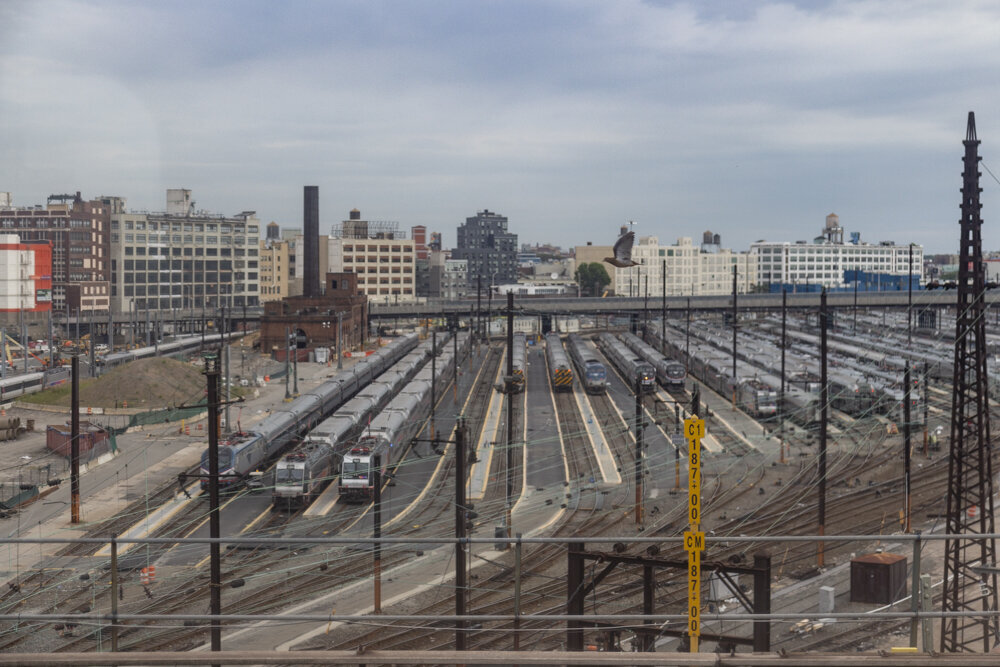Sunnyside Yard Master Plan features new LIRR stop, 12K affordable units
/Sunnyside Yard, site of a proposed real estate mega-development, is approximately six times the size of Manhattan’s Hudson Yards, a housing and commercial complex that opened last year. Eagle photo by Jonathan Sperling
By David Brand
A master plan to build an entire neighborhood atop the bustling train tracks of Sunnyside Yard would establish a new Long Island Rail Road stop and create more than 12,000 units of affordable housing, according to the city and Amtrak, which owns much of the the property.
The plan, released Tuesday, would require a $14.4 billion deck above the train yard in order to support the project, akin to the Hudson Yards development on Manhattan’s West Side, but six times larger.
The city and Amtrak, aided by the New York City Economic Development Corporation, released the proposal Tuesday after years of planning. The housing plan would set-aside 50 percent of units for families who earn less than 50 percent of the Area Median Income, or less than $50,000 per year. Nearly one-third of those units will go to families earning less than 30 percent of AMI, or $28,830 per year.
U.S. Rep. Carolyn Maloney said she was “overall encouraged” by the proposal but said the developers, and the city, must continue to engage community members in the rapidly growing area.
“Sunnyside and Long Island City desperately need more schools, libraries, and park space and these needs are only increasing as more people call the neighborhood home,” Maloney said.
The proposal has earned rave reviews from developers.
“It’s unprecedented in the last 50 years and it’s amazing,” Jonathan F.P. Rose, president of Jonathan Rose Companies, told The Wall Street Journal. Rose’s real estate company builds affordable housing.
“When you combine those things with schools, parks, health care, social services, it creates the platform for people to move forward economically with their lives,” Rose added.
But many community members have remained skeptical of the project, arguing that Sunnyside Yards will accelerate gentrification and displacement, and that developers would not be held accountable to their commitments.
“Learn from Atlantic Yards about the lack of accountability from the agencies in charge and from the original developers who have sold their rights and are, by now, long gone,” said Stop Sunnyside Yards founder Emily Sharpe in an Eagle op-ed last year.
Sharpe was referring to the Atlantic Yards project in Brooklyn, where so-called “affordable” units still price out many long-time residents, and where developers have been slow to create the agreed-upon number of units.




